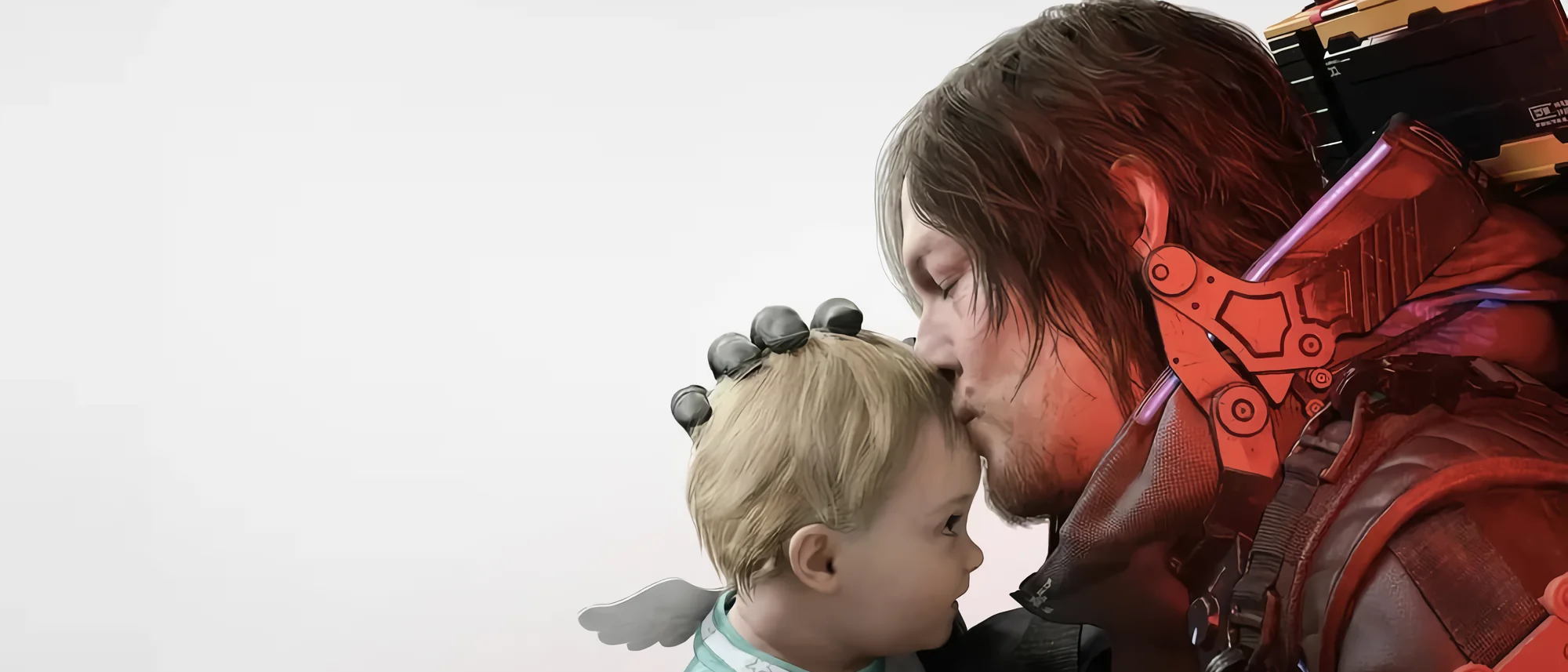Tom's Guide Verdict
Death Stranding 2: On the Beach is one of the most visually stunning games I've ever played, putting at the forefront a narrative that twists and turns in spectacular (Kojima-only) ways. Action is far more of a focus this time, a big departure from its predecessor, and a slew of new toys makes package delivery that much more of a thrill-ride.
Pros
- +
Two vast open maps to explore
- +
Tons of new tools to use and twists on familiar ones
- +
An incredibly poignant story
- +
Some of the most beautiful landscapes in all of gaming
- +
Vast array of weapons and sleek combat
Cons
- -
Slightly janky controls at times
- -
Package damage feels inconsistent
- -
Similar gameplay from the original
Why you can trust Tom's Guide
Platforms: PlayStation 5
Price: $69 / £69 / AU$125
Release Date: June 26, 2025 (June 24 Early Access)
Genre: Action-Adventure
Death Stranding 2: On the Beach is a our second taste of Hideo Kojima's independence, and marks his first original title on the PS5. It takes up after the rather polarizing Death Stranding, which would go on to sell over 20M copies since its 2019 release across a variety of platforms, including PS4, PC, and even iOS devices.
Its sequel keeps the same package-delivery gameplay structure of the original, but is underpinned by a story that's as breathtaking as it is action-packed. Sam Porter Bridges (Norman Reedus) is thrust back into the tides, put on a mission that sees him once more reconnecting a broken and isolated society using the chiral network.
With the UCS (United Cities of America) in his rear-view, it's now time Sam sets his sights elsewhere. For that, we'll need the help of a sophisticated submersible called the DHV Magellan and new "Plate Gates," essentially giant wormholes connecting two distant places — in this case, Mexico and Australia.
While this might be the second official title by Kojima Productions, this isn't Kojima's first rodeo. Elements of Metal Gear Solid ring throughout, with plenty of combat beats, stealth, and structure-building playing key parts in this exciting return-to-form. Here's why Death Stranding 2 is not only totally electrifying but already my favorite game of the year.
Death Stranding 2: On the Beach: The Basics
- What is it? Death Stranding 2 is a sequel to Death Stranding, the first independent entry developed by Hideo Kojima and Kojima Productions. It's led by Norman Reedus alongside a slew of other well-known actors, pitting you in the midst of a post-apocalyptical world wherein your aim is to reconnect what's left of society.
- Who is it for? Death Stranding 2 is not for the faint of heart. It's a game that relies upon deep, personal storytelling that takes a while to build to a crescendo. If you really enjoyed Death Stranding, or if you're a big fan of Hideo Kojima's wacky and long-winded storytelling, this game is for you.
- What's the price? The standard edition of Death Stranding 2: On the Beach costs $69, with a digital deluxe costing $79.
- What other games has the developer made? Kojima Productions has only made Death Stranding so far, the predecessor to this title, but Hideo Kojima is widely known as the creator of the Metal Gear Solid games, as well as Zone of the Enders, Snatcher, and Policenauts.
- What games is this similar to? Although Death Stranding 2 really is only similar to the original Death Stranding, it bears many resemblances to Metal Gear Solid, specifically Metal Gear Solid V, in its action sequences. You could also point to Horizon Zero Dawn and Horizon Forbidden West, given they were built in the same game engine.
Make the most of your future

Death Stranding 2 kicks off 11 months in the wake of its predecessor. Sam Porter Bridges is a father now, tending to the little baby Lou, the BB (Bridge Baby) who got you safely through the first game. You're holed up in Mexico, living a life of solitude that's punctuated by Lou's cheerful, bubbly laughter.
All seems well in the world — Sam's world at least. But this happy-go-lucky, fatherly time doesn't last for long.
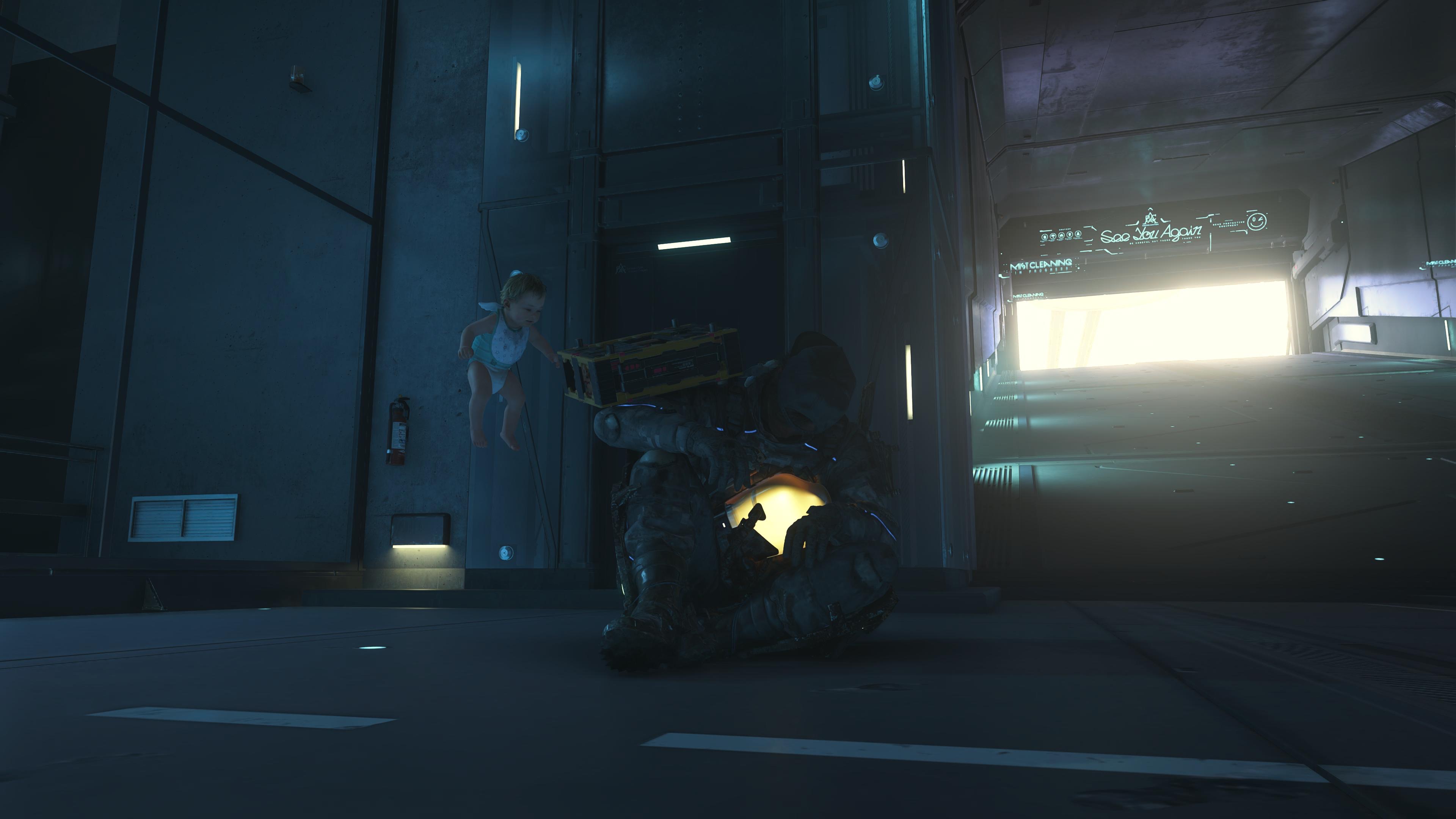
Upon being thrust back into the world-connecting mix by Fragile (Léa Seydoux), who tasks you with bringing some areas of interest online in Mexico, your whole world no sooner falls apart. Lou's untimely and unfortunate passing following a random attack on your shelter leaves you devastated and heartbroken. You're once more totally alone.
Get instant access to breaking news, the hottest reviews, great deals and helpful tips.
Some hope still remains, as Lou's supposed return as a BT (Beached Thing) in his old pod gives you slight solace. It's nowhere near the same, though, not as things used to be in those unforgettable 11 months of pure, unadulterated togetherness.
A month passes and your mind remains in shambles. Depression and sadness have taken its toll, but Fragile's return with a whole new directive sparks hope. A new quest, led on a tar-gliding ship called the DHV Magellan might just be the thing that gives you the strength to carry on.
It's here where we truly begin our journey, flowing neatly on through the Plate Gate into the sprawling open outback of Australia. And, it's here where even more exciting mysteries are just waiting to be uncovered.
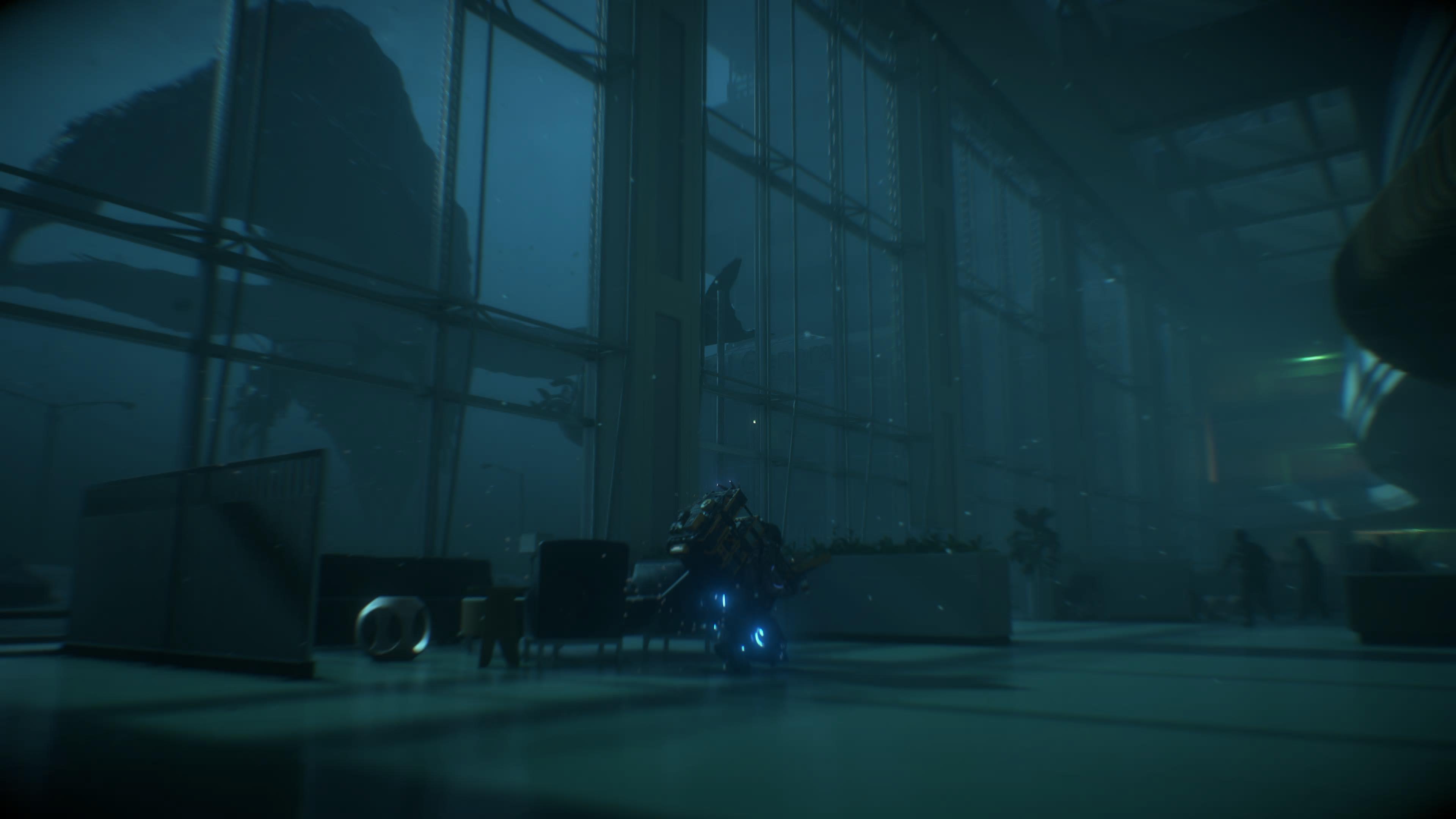
Kojima's brand-name narrative riddles are still ever-present, but the real meat of the story doesn't take several hours of cutscenes to sift through and get going this time around. Questions abound on the nature of several story threads, all of which you're left to ponder while traversing the Australian outback aided by a slew of new tools and friends that make the journey far more rewarding.
The cast of astounding new characters includes the mysterious Tomorrow (Elli fanning) and Neil Vana (Luca Marinelli), to the bubbly Rainy (Shioli Kutsuna), and plenty more. Each have an interesting story to tell beyond the nature of the overriding narrative, making them feel as alive as ever.
Of course, the return of Higgs (Troy Baker) ensures this mission is fraught with systematic impediments, made manifest in his legion of ghost mechs — not to mention the hordes of BTs and enemy encampments that litter the environment. Nothing Sam can't handle.
Trade in that rope for a stick
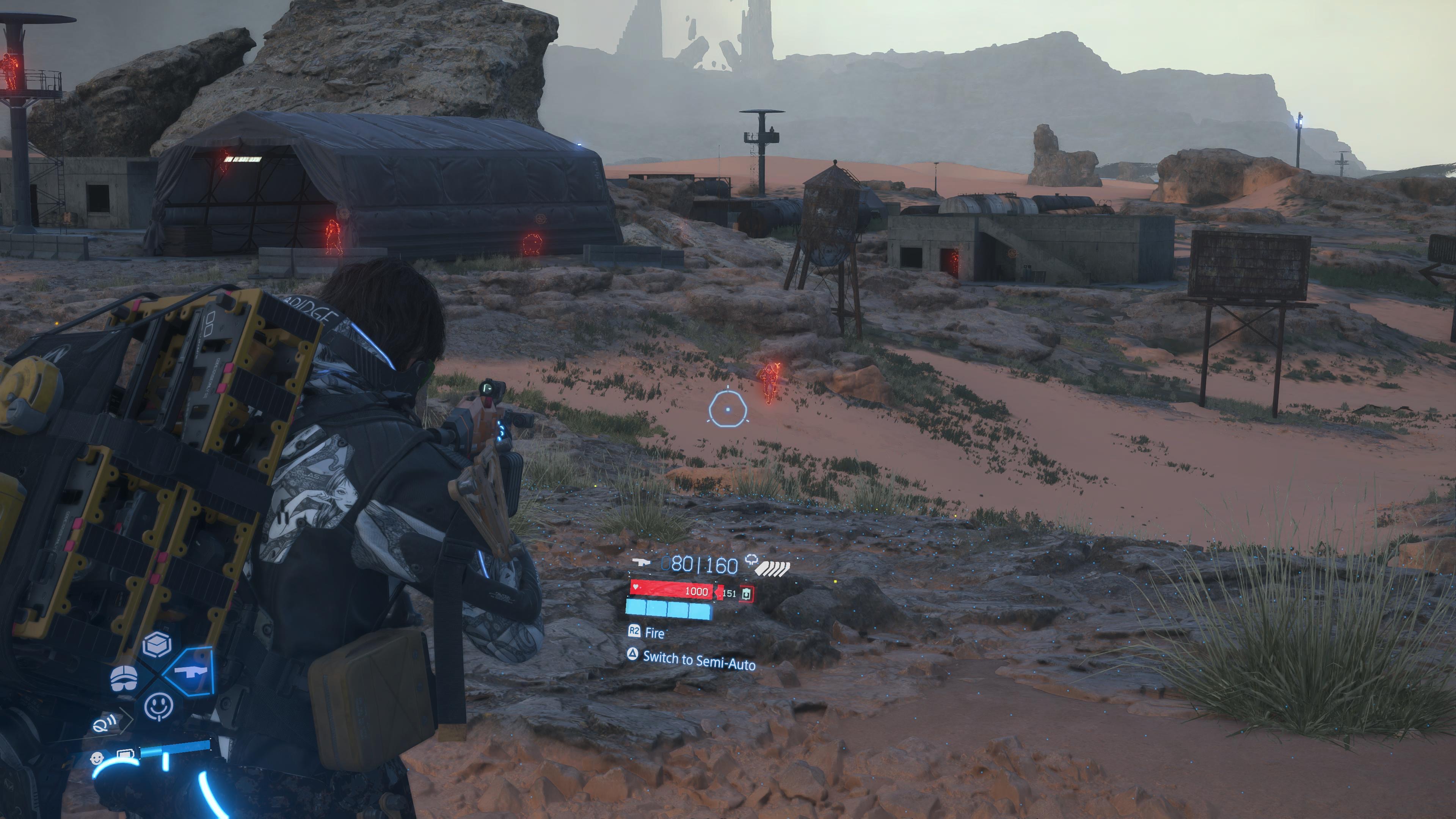
Unlike its predecessor, Death Stranding 2 is all about the action. Combat, both stealth-based and in-their-face, is a pivotal part of your experience, and a slew of cool new toys makes this a total delight. These include an 80-round machine gun, bola stun gun, silenced machine pistol, and chiral cannon, to name just a few.
One of my favorites, a weapon that was sorely lacking from the original, is the sniper rifle. It shoots tranquilizer rounds from a distance, but at the cost of drawing tons of attention, making you an instant target the moment it's fired. You do have to go out of your way to get this weapon, and it's not effective against the more menacing foes you'll be facing in Death Stranding 2: BTs, or "Beached Things."
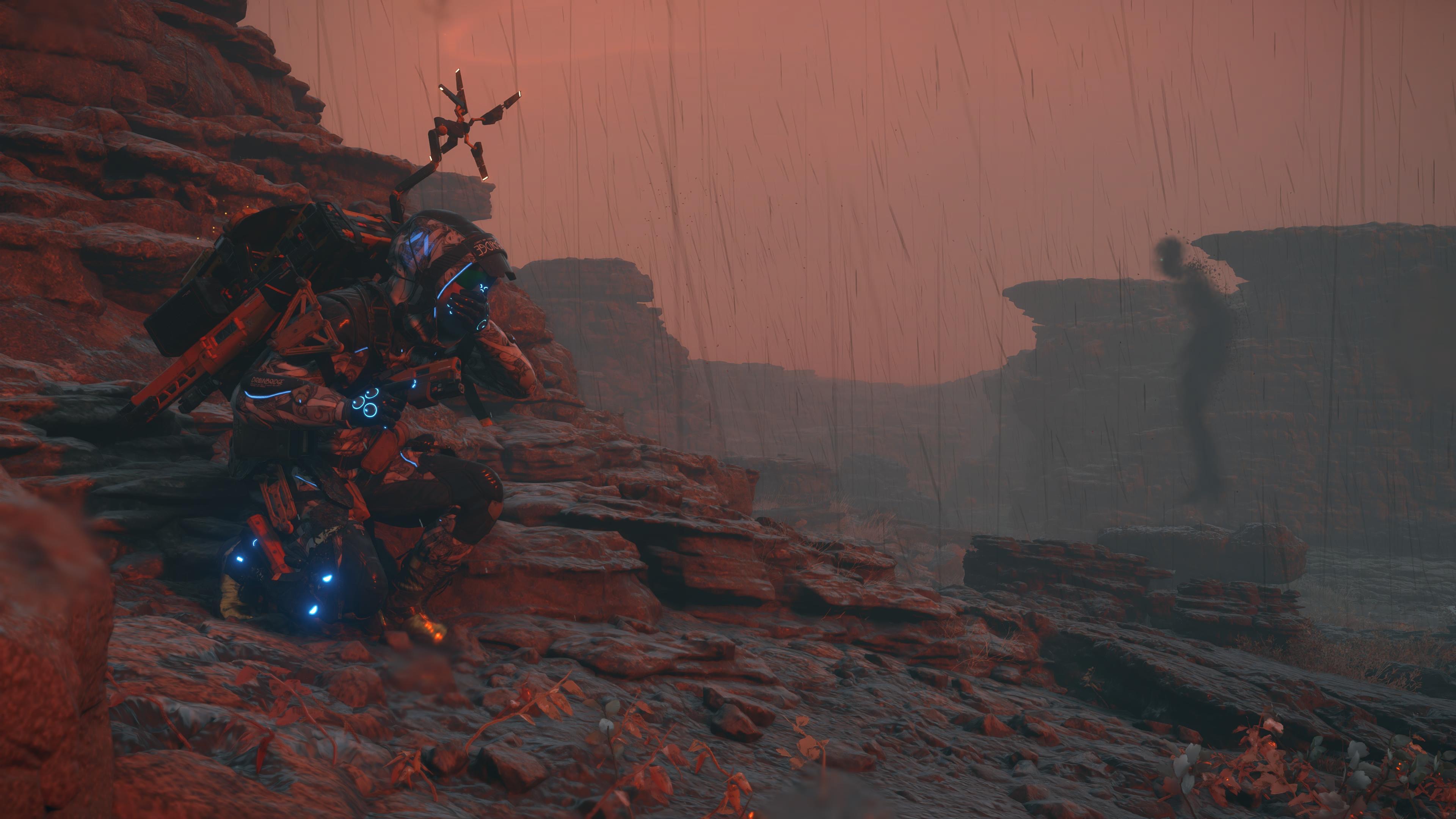
It's against these ghost-like creatures where Kojima's brand-name stealth comes into play. It dually blends the action-stealth you might know of Metal Gear Solid with the more terrifying aspects of Silent Hill, and works wonders, as getting caught by BTs can lead to a tough boss encounters, which can prove challenging in your first few hours.
Luckily, stealth isn't a major requirement, but be sure to pack a grenade pistol (or two) if you're charting BT territory.
Hope is an indispensable asset
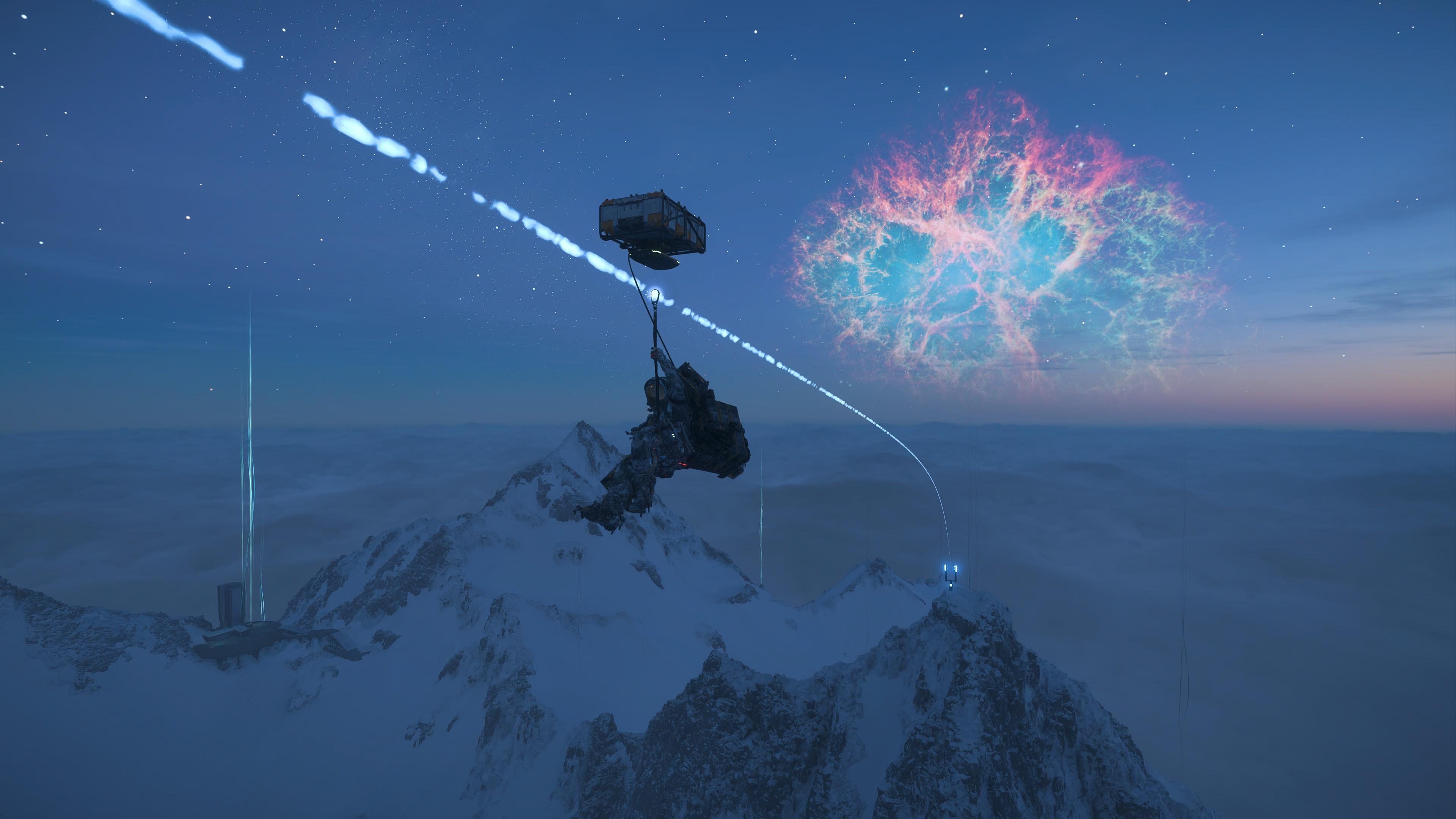
But it's not just you making this trek through the grand outback. You'll find, thanks to the ever-growing chiral network that you're helping to put in place, a plethora of other players' tools and structures beginning to pockmark the map.
Ropes, ladders, bridges, even weapons can all be found in the wild — so long as that particular area is connected to the network. Likes are the bleeding heart of this world. Exchanging likes is a way of broadening your connection with other players, many of which you'll find in the new SSS (Social Strand Service).
Don't hesitate to make social contracts with those you know (and don't know) — they might just be your saving grace.
If you're lucky, other players will directly assist you with a new feature called aid requests. This lets you drop down a beacon of need — say, a weapon's cache on the doorstep of an enemy encampment. Or, better still, you can even drop a request for that very encampment to be wiped out.
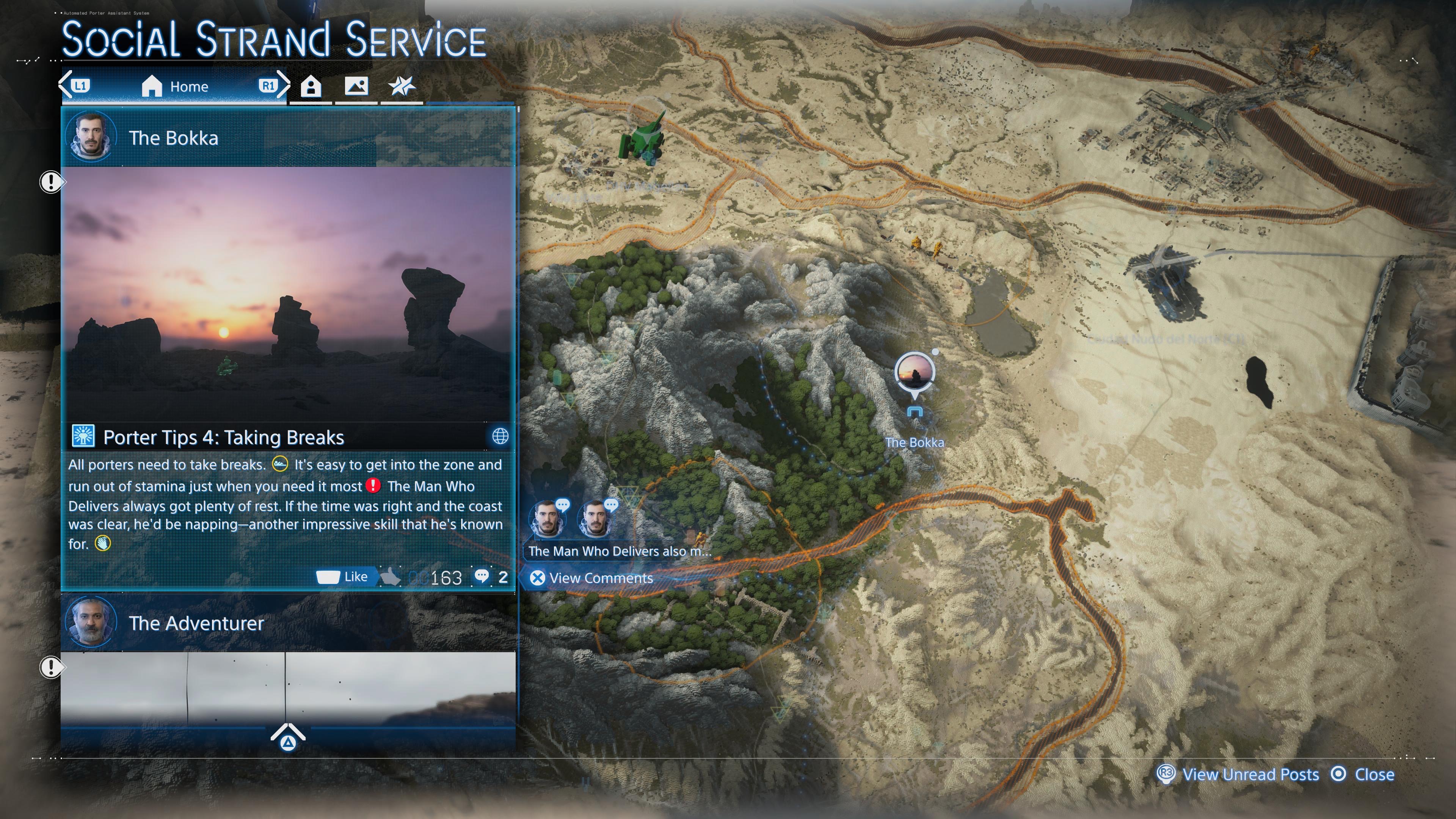
There's this cathartic release you get every time you boot up Death Stranding 2 again and get a mass amount of likes from all the tools you've left behind and structures you've built.
There's really nothing quite like it and it serves to give those hours of rebuilding roads, railways, putting up zip-lines, and leaving behind vehicles immense amount of purpose.
Thus, whatever you do, don't play offline.
To struggle on
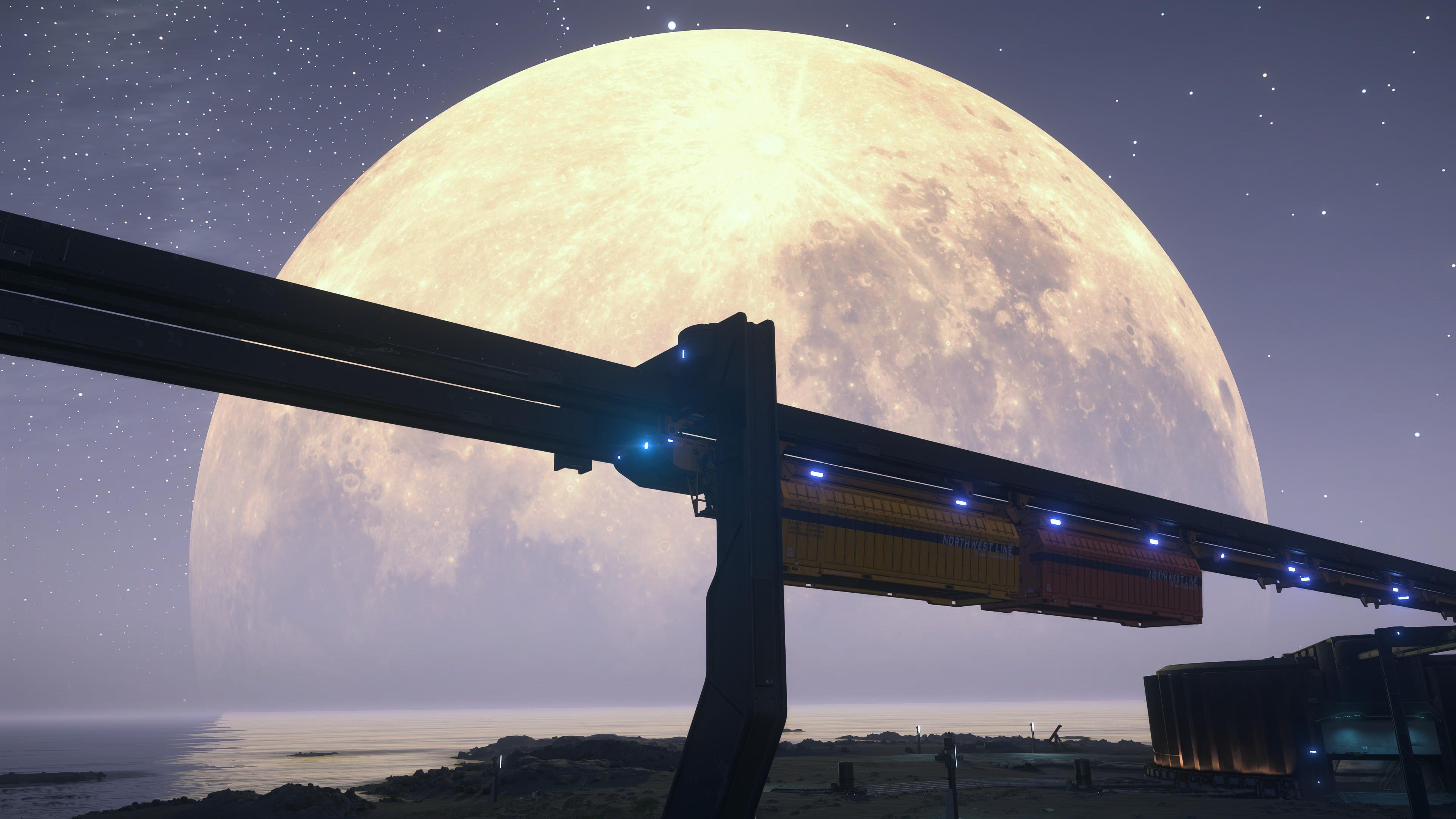
Of course, this is still fundamentally the same gameplay loop as Death Stranding, which some might call "walking sim-esque." You're still a glorified delivery service worker trudging through the bleakness with packages strapped to your back — and that might not be for everyone.
But, if there's one thing I can say, it's that Death Stranding 2 is one of the most beautiful games I've ever played. I've used camera mode in this game more than I ever have in all my life.
The new day/night cycle coupled with the gorgeous backdrops make it prime fodder for unimaginable photography, the likes of which I'm nowhere near as capable at mastering as others.

And, while it might bear a similar gameplay loop as its predecessor, at least there are plenty of quality of life improvements. These include much simpler menu navigation where you don't have to hold "X" to exit with your luggage, weapons instantly switching to the desired ammo type depending on the enemy encounter, and cargo management being an absolute breeze with its own d-pad quick button.
Add to that major gameplay changes, like APAS enhancements that let you beef up Sam's abilities and mining facilities, some connected to full monorail systems, and many of the issues that plagued the original are long forgotten. Oh, and zip-lines can curve now!
Death Stranding 2: Verdict

Death Stranding 2 is a once-in-a-lifetime achievement. It's genuinely hard to put to words the gravity and emotions that swell throughout this game. Not just in terms of its narrative, but also in how the themes are represented so eloquently in its gameplay loop.
It's also one of the very few experiences that actually brought tears to my eyes in its closing moments. Say what you will about the "walking sim" aspect of its general gameplay, but the story and its characters have purpose. They have feeling and mean something to you in the end. When those credits roll — you're left with unfettered sorrow and happiness all the same.
Even if the first game left you feeling dissatisfied, stick with this one. There's so much to love in its asynchronous strand multiplayer elements, fluid stealth-combat, and meditative adventure. At its heart is a message that's totally poignant and ripe for our times, something we should all take to heart even in our bleakest moments.
It's that we're never truly alone, and even in those small windows of seemingly helpless isolation, you should (and must) keep on keeping on.

Ryan Epps is a Staff Writer under the TV/AV section at Tom's Guide focusing on TVs and projectors. When not researching PHOLEDs and writing about the next major innovation in the projector space, he's consuming random anime from the 90's, playing Dark Souls 3 again, or reading yet another Haruki Murakami novel.
You must confirm your public display name before commenting
Please logout and then login again, you will then be prompted to enter your display name.
